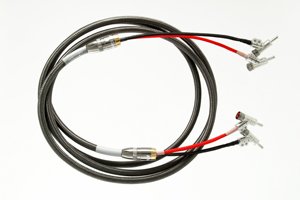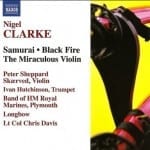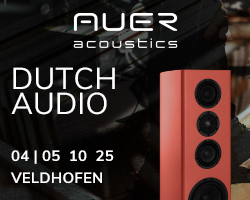Background
Atlas Cables started out named Mountain Snow, and have been in the audiophile cable and accessories business for  many years.
many years.
Most of their cables are designed and made in East Ayrshire, Scotland.
The Ascent is the lowest rung of Atlas’s top Reference speaker cable range, which also includes the Asimi and Mavros cables.
Interestingly, the Ascent comes in two versions. The Ascent 2.0 contain 2 sq mm cross sectional area of stranded OCC (Ohno Continuous Cast) copper within a PTFE dielectric, while the Ascent 3.5 contain 3.5sq mm of the same conductor within the dielectric. OCC copper cable features extended copper grain size, reducing the number of grain ‘boundaries’ which the electrical signal has to traverse. This is claimed to increase the purity of the resulting sound. Well, it’s an interesting suggestion, I have no idea if it’s true or not!
In their publicity literature, Atlas recommends using the less expensive Ascent 2.0 “where bass is not a prerequsite” and the 3.5 “if increased low frequency information is desired”.
A curious choice of wording — I’m not sure if this means the 2.0 is meant for small standmount speakers or as the midrange/treble cable for a bi-wire setup. Maybe both!
I have not auditioned the 2.0, so I can’t comment on it. It would certainly be interesting to compare the two and maybe use them in a bi-wire configuration.
The cables appear well made and very easy to use – the “Z-plugs” (4mm banana) on the set of cables provided for review were a miniature marvel. I usually find expanding / locking banana plugs to be a right pain in the fundament, but these are superbly thought out and a pleasure to use.
Apparently, the plugs are custom made for Atlas and feature solder-free connections. They certainly are impressive.
The cable is fairly stiff, but not excessively inflexible. With a bit of care and planning, it’s fairly easy to route it around obstacles.
Sonics
Sonically, the Ascent 3.5ii has quite a distinctive presentation.
Treble is pure, high rez and extended. To be honest, it isn’t that great a match with my beloved Krell KAV-250a power amp, whose character is a little over-exuberant in its top end. But with a more neutral amplifier the high frequencies of the Atlas cables can be heard to be refined and very highly resolved with no accentuation of sibilance. System synergy is all important, as ever.
Mids are very open and immediately ‘impressive’, in a good way. Vocals have excellent clarity. There was a bit of a startle factor when I first plumbed in the Ascents – “whoa, nice!”, I thought.
Bass is deep, taut, controlled and a little on the dry side. Certainly I have heard more bass bloom and more of an enveloping low frequency ambience through other cables. Whether the slightly dry and matter of fact character will suit you will depend on the synergy with your system and your own personal preferences. I have no doubt that some listeners will love it while others will hanker after a richer sound and will look elsewhere.
On James Blake’s Limit To Your Love, that bass line is rendered with breathtaking tautness and solidity. This can often overpower systems and listening rooms, resulting in noticeable accentuation of room resonances, but the control on offer through the Ascent cables made sure this was not a problem.
With a recent and very ‘left field’ musical discovery of mine – John Scott’s ‘Colchester Symphony’ – there is a deep bass drum that resonates through the concert hall in the first  movement, and in my system the Ascents don’t quite allow my system to capture the power, heft and room filling presence of the sound that I know can be available from this recording.
movement, and in my system the Ascents don’t quite allow my system to capture the power, heft and room filling presence of the sound that I know can be available from this recording.
Imaging is delineated with precision left to right, with excellent focus on individual images within the overall recorded acoustic. But there is a bit of a restriction on image depth which limits the solidity of the images presented. On Naxos’ jaw-droppingly superb reco rding of some of Herbert Howells’ beautiful choral works I have heard more 3D spaciousness and insight into the acoustic space of the recording. Individual voices and the superb choral blend are well conveyed, though, and the long reverberations of St. Johns College Chapel, Cambridge, are heard to tail away with exquisite precision and delicacy.
rding of some of Herbert Howells’ beautiful choral works I have heard more 3D spaciousness and insight into the acoustic space of the recording. Individual voices and the superb choral blend are well conveyed, though, and the long reverberations of St. Johns College Chapel, Cambridge, are heard to tail away with exquisite precision and delicacy.
Dynamics are allowed through seemingly unhindered; big and bold, taut and fast. Soft to  loud transitions are handled with exemplary control and speed, the awesome percussive slams toward the end of Nigel Clarke’s ‘Pernambuco’ are eye-blinkingly impressive. A real challenge for any hifi – the Ascents allowed the pin-you-to-the-back-wall leading edges through very well indeed. The rest of your system has to be up to it as well, mind!
loud transitions are handled with exemplary control and speed, the awesome percussive slams toward the end of Nigel Clarke’s ‘Pernambuco’ are eye-blinkingly impressive. A real challenge for any hifi – the Ascents allowed the pin-you-to-the-back-wall leading edges through very well indeed. The rest of your system has to be up to it as well, mind!
The raunchy rhythms on Yello’s Singles Collection was toe-tappingly, head-noddingly good.  The clean taut bass allowed thru by the Ascents was just right to get the pace’n’timing thing down to a T. Great fun!
The clean taut bass allowed thru by the Ascents was just right to get the pace’n’timing thing down to a T. Great fun!
Some Comparisons —
At a similar price level. NBS’s Omega Junior and Acoustic Zen’s Satori cables have a slightly gentler top end (OK, they are a tad rolled off! – the AZ ‘s more so than the NBS), and that just happens to complement my Krell amp nicely. The AZ is lower rez, more ‘comfortable’ and enveloping, and some folks will prefer its easier going nature. Both are noticeably a bit slower than the Atlas but give more insight into the 3D imaging nature of recordings.
At a lower price level, Tellurium Q Black provides strong competition. Once again it’s treble is a bit rolled off against the neutrality of the Atlas Ascent 3.5ii, and it allows a fuller but slightly less resolved bass. The Atlas has faster and broader dynamic swings. Where the Q Black excels, though, is in its portrayal of image depth and solidity. The Atlas can’t really match it there.
At a higher price level, Tellurium Q Ultra Black really leaves the others behind when it comes to natural sounding 3 dimensional imaging. They also have the high frequency extension and detail of the Atlas Ascents. You pay more, you get more, as you’d hope and expect. It would be interesting to hear what the higher echelons of the Atlas Reference range has to offer.
So, in Summary, what do we have here?
Well made cables that look great and are easy to fit.
Sonically, they have …. excellent clarity and transparency – taut, powerful, controlled and slightly dry bass – extended and precise, but not exaggerated, treble – imaging that is more of a well delineated wall of sound than a 3D holographic extravaganza – impressive dynamic speed and bandwidth.
You may have gained the impression that personally I admired the Atlas Ascent 3.5ii cable rather than loved it. I think that’s about right. I am sure that others will reach for their credit cards straight away!
The Atlas Ascent 3.5ii is a fine speaker cable that provides good value for money in many respects – it’s not perfect, but then what is? At its price point it excels in some ways and can be improved on in others. It has quite a distinctive presentation that I have no doubt will suit some listeners well. I would strongly recommend an audition if you are considering a speaker cable in its price range.
£1100 for a 3 metre pair – other sizes are available.
_____
Review system: MBL 116F speakers, Krell KAV-250a power amp, Restek Consens pre-amp, Vincent CD S7 compact disc player. Lumley Reference, RFC Pluto & Oscar’s Audio Dark Knight i/c cables.
Author – Jerry






































































































































































































You must be logged in to leave a reply.